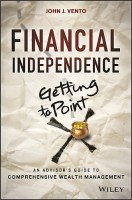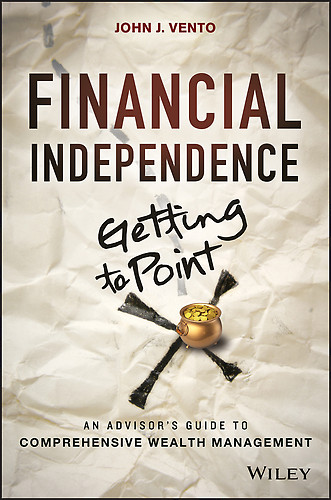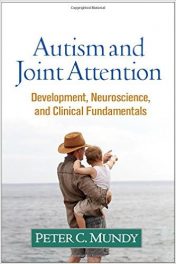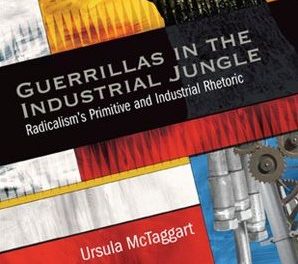 Author: John J. Vento
Author: John J. Vento
Publisher: Wiley
Book Review by: Sonu Chandiram
What struck me first as I looked at the cover of this book was how small the pot of gold is. Is the value of that pot large enough that if the gold coins are sold and the cash used to buy high dividend-paying mutual funds for example, will the dividend income be large enough even to pay for a modest lifestyle?
I am of course not being critical of the book itself but the cover image chosen for it. The gold represents wealth, and ‘financial independence’ means having enough money coming every year or month or week not only to pay for ongoing, fixed living expenses, but a lot more – to be able to buy or do a lot of things that one desires. And in my estimation, that small pot of gold is way is too little to represent financial independence.
In any case, let’s take a look at the ideas presented in this book by John J. Vento to achieve financial independence.
At the outset, Vento writes that your own idea of financial independence could be an annual retirement income of as little as $25,000 or a net worth of $250 million or more, or somewhere in between, which is a wide range. How much you need and how much you want are two different things.
If the question is focused on how much you need, the amount depends not only on where in the United States you reside but how you presently live. For example, if you live in Louisiana, the lowest property-tax state where the average homeowner pays only about $180 per year to the town for the services he or she receives, an income of $25,000 is likely to be enough, after adding up all the relatively lower-amount living expenses, from food to a vacation by car.
But if you live in the metro New York – New Jersey – Connecticut – Pennsylvania area, where the U.S. Bureau of Labor Statistics reported that the average family spent $58,172 in 2010-11, that $25,000 will not even take your family beyond 43 percent of the way or past the first 157 days of the year, or just until May 7th or so. How do you live past that?
John J. Vento points out that each of us has different levels of living expenses, which consists of fixed and variable ones. And each of us has different levels of income, fixed and variable as well, depending on what we do to earn it. These are the like a company’s statements of income.
Likewise, each of us have different amounts of assets and liabilities. What is the total value of what you own, which would include: the equity in your residence, the value of stocks, mutual funds, bonds and other securities you own, items of value such as jewelry, gold coins, etc., cash in savings and checking accounts, and so on.
On the other hand, what is the total amount of debt you have – the balance owed on your house, credit card balances, personal loans owed to others, etc. Total up all these liabilities and deduct them from the total value of your assets, and you come up with your financial net worth.
Everyone should work to increase their income, lower their expenses, and use the difference to purchase assets that increase in value. When assets go up in value and / or generate income for you, you create additional wealth for yourself and your family, the author points out.
John J. Vento states that each of us either has or does not have an ‘x’ in our minds that represents financial independence. What is that amount for you? And if you do not have an ‘x’ in your mind, it is important to determine what it is and start working towards it.
He provides us the tools in this book to help us get to our point ‘x’. He provides us ten keys to creating and managing our wealth. If you are struggling to get above your expenses wherein your income is insufficient, he suggests you do two things: find more means of income as well as lower your expenses, particularly discretionary (non-fixed) items.
This is a very good guide to your financial independence. Its chief value lies in the knowledge and values Vento presents in his first ten chapters – his ten keys to financial independence. There is an additional (11th) chapter that must be also be read in full and understood, on the time value of money.
I first thought of giving you titles of the ten chapters, but on second thought, I think you should discover them for yourself. If you truly want financial freedom, go get this valuable book and read it.






